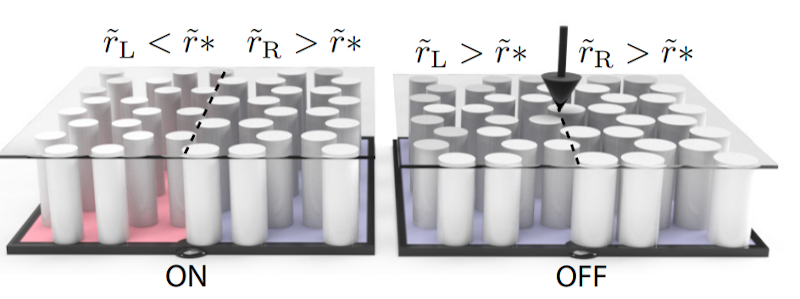Have you ever heard of topological insulators? These are exotic materials where electricity flows only on the surface with very little loss. Now, according to IEEE Spectrum, scientists at Harvard have used the same concept to create a transistor for sound waves and it may be a new branch of electronics. The actual paper is available if you want some light reading.
Apparently, topological insulators protect electrons moving along their surfaces and edges, something that won the 2016 Nobel Prize in Physics. Photons can also be protected topologically so they move with very little loss across the materials. Making electrons flow in this manner is an attractive proposition, but there are challenges, especially when creating a device that can switch the flow of electrons on and off as you might with a transistor in and out of saturation. Sound waves, however, are much easier to work with.
The device is large for what we think of as a transistor and consists of an airtight box containing a honeycomb of steel pillars and a plate made of a material that can expand and contract quite a bit with temperature. The pillars on one side of the plate are a bit larger than the ones on the other side. That along with the spacing of the pillars forms a topology that can allow sound to travel through the pillars or not. What determines the state of the transistor? Heat. The base plate has to have a very large thermal expansion coefficient and the device uses a shape memory alloy to meet that need.
At 20C, ultrasonic sound waves will not pass through the transistors. Heating the device to 90C allows the sound to travel through, however. Another device can convert ultrasound into heat forming what they call an acoustic transistor. That is, a sound wave coming in can control sound passing through the device. Photonic versions of this transistor seem to be possible, but electrons don’t behave in the same way, although researchers are trying to find a way to apply the same idea to conventional electronics.
Although the paper calls the device a transistor, it is more of a switch than a true transistor as far as we can tell. That’s still useful, probably. What would you do with a heat-controlled ultrasonic transistor? Beats us. The Spectrum article mentions possible applications in noise reduction, ultrasound imaging, and echolocation, among others.
As we’ve pointed out before, almost any kind of switch can be a logic gate. You can even simulate old-fashioned relay mux logic, which would probably work well with the acoustic technology.
















Seems like they’ve pretty much all been covered … at least evidently. ;-)
Well, everyone loves science.
https://scitechdaily.com/first-molecular-electronics-chip-developed-realizes-50-year-old-goal/
Love the name of the company.
The real hacks were the comments you made along the way
“What would you do with a heat-controlled ultrasonic transistor?”
Well, duh. Convert buckets of acoustic energy into heat, of course!
(Don’t get me wrong: I’m a fan of research. The above was the cynicism module in me acting up :)
If this can be designed as a computer with logic gates and math-modules, it would be a candidate for a computer that would work on Venus, where ordinary electronics just burn up.
Aha…..and how do electrons “burn up”? Is it a new concept of physics?
Building an Analytical Engine might be more practical. At least you get memory and Turing-completeness.